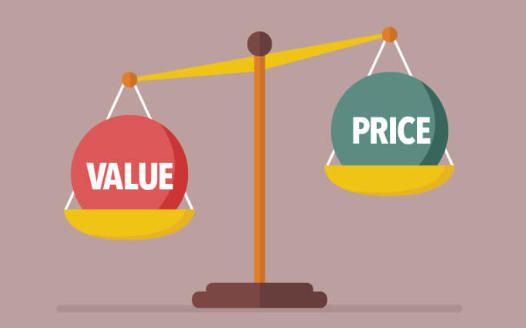Finding the best pricing strategy is challenging. There is no strategy that fits all, so you have to build your own. Each business has unique characteristics and objectives, so the first step would be determining yours’. If you truly believe your business has value, value-based pricing is a perfect strategy you can add to your marketing mix.
ICON_PLACEHOLDEREstimated reading time: 3 minutes
Table of contents
What is value-based pricing
Value-based pricing is a customer-oriented strategy where the price of a product is determined by its perceived value to customers.
In other words, it is based on the target audience’s willingness to pay (WTP) for a product. It has a significant effect on consumers’ focus when they are shopping, shifting it from price to value.

It’s the price and demand combination that yields the highest profit. Instead of testing countless price points, this strategy allows marketers to ask the target audience their willingness to pay for a particular product.
Before anything else, a good pricing strategy will give you the optimal price/demand ratio. What is it?
Of course, for consumer brands, it’s not possible to ask every customer one by one, but surveys give marketers a clue of the average WTP.
Value-based pricing as a SaaS strategy
Numerous software service companies ask their customers what are they willing to pay for their service. The majority of these companies can also customize their service for the needs and interests of the customers.
So, rather than targeting a large audience with a single pricing model, they segment their audience based on business objectives and budget.
What about retailers? Is value-based pricing suitable for ecommerce?
WTP research for online retailers
If you’re selling consumer electronics, some of your products are already price tiered for different customer segments.
For example, Samsung produces smartphones for $149, $600, and $1980. If you include them all in your assortment, you’ll be targeting different segments with different WTPs. Your foremost duty is to market them to the right audience.
Assuming your product assortment is broad, it’s not possible to conduct a WTP research for each. But if you’re selling a limited number of products, it’s highly beneficial to measure customers’ WTP.
Advantages
- When surveying customers to find out their WTP, you learn what customers think of your products. The valuable knowledge you’ve obtained helps you improve your product/service.
- Via surveys, you’ll learn customers’ pain points and expectations of your service. Make use of that information for excellent customer service.
- You can test different price points to find the optimal price, which yields the higher profits.
Disadvantages
- Surveys take a lot of time and money.
- Surveys are not entirely accurate.
Let’s wrap it up
In the competitive ecommerce landscape, knowing the value consumers see in your products can give you significant leverage when finding the optimal price/demand ratio. The single most important indicator of that value is their willingness to pay.
Measuring WTP is time-consuming and expensive, making it nearly impossible to conduct for a large product assortment. But some of your products, mainly in the consumer electronics category, already have prices from the manufacturers. What’s left to you is marketing them for the target audience and track them automatically.

Comment (1)
Paul
22.10.2023Great article!
Comments are closed.